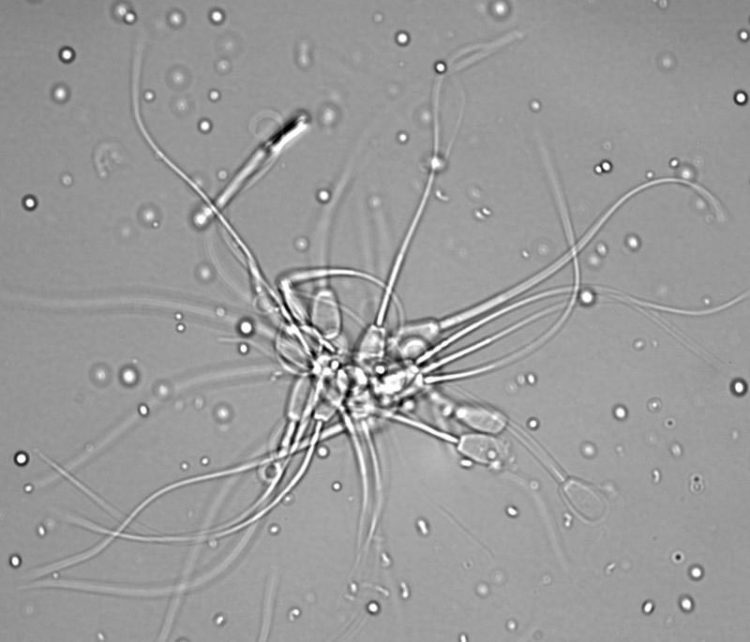TU Dresden biologists examine sperm quality on the basis of their metabolism

Bovine sperm in bright-field microscopy with differential interference contrast. (c) Dr. Veronika Magdanz
Thanks to the advanced possibilities, in vitro fertilization is part of everyday medical practice. The so-called swim-up method is a sperm purification method that is being used daily in andrology labs around the world as a simple step for in vitro sperm selection. This method accumulates the most motile sperm in the upper fraction and leaves sperm with low or no motility in the lower fraction by adding them to a culture medium. The reasons for the different sperm qualities are still poorly understood.
A team of biologists from TU Dresden has now compared bovine sperm from the upper and lower layers with regard to their metabolic rate, their motility and sperm tail length. In their study, they identified clear connections: the faster sperm selected by swim-up show higher metabolic rates and longer driving flagella than non-selected cells.
Dr. Veronika Magdanz, head of the study, explains the results as follows: “However, it is not quite as easy as that these sperm simply metabolize more. The stored energy is also lower in the selected sperm, which shows that they consume more energy reserves. Understanding the metabolism of the selected spermatozoa is important because certain metabolic pathways can also have a detrimental effect on the spermatozoa. For example, cell respiration in the mitochondria, one of the possible metabolic pathways, produces harmful oxygen radicals that affect the genetic integrity and cell functions of the sperm.”
The results of the study are the first to provide a metabolic explanation for why the swim-up method selects sperm that appear to be functionally superior. These findings can be applied to all human and animal sperm and provide valuable new insights into the origins of life.
Dr. Veronika Magdanz
Open Topic Postdoc
Chair of Applied Zoology
Tel.: 0351 463-35347
Email: veronika.magdanz@tu-dresden.de
Magdanz V, Boryshpolets S, Ridzewski C, Eckel B, Reinhardt K (2019). The motility-based swim-up technique separates bull sperm based on differences in metabolic rates and tail length. PLoS ONE 14(10): e0223576. https://doi.org/10.1371/journal.pone.0223576
Media Contact
More Information:
http://www.tu-dresden.deAll latest news from the category: Studies and Analyses
innovations-report maintains a wealth of in-depth studies and analyses from a variety of subject areas including business and finance, medicine and pharmacology, ecology and the environment, energy, communications and media, transportation, work, family and leisure.
Newest articles

A universal framework for spatial biology
SpatialData is a freely accessible tool to unify and integrate data from different omics technologies accounting for spatial information, which can provide holistic insights into health and disease. Biological processes…

How complex biological processes arise
A $20 million grant from the U.S. National Science Foundation (NSF) will support the establishment and operation of the National Synthesis Center for Emergence in the Molecular and Cellular Sciences (NCEMS) at…

Airborne single-photon lidar system achieves high-resolution 3D imaging
Compact, low-power system opens doors for photon-efficient drone and satellite-based environmental monitoring and mapping. Researchers have developed a compact and lightweight single-photon airborne lidar system that can acquire high-resolution 3D…





















